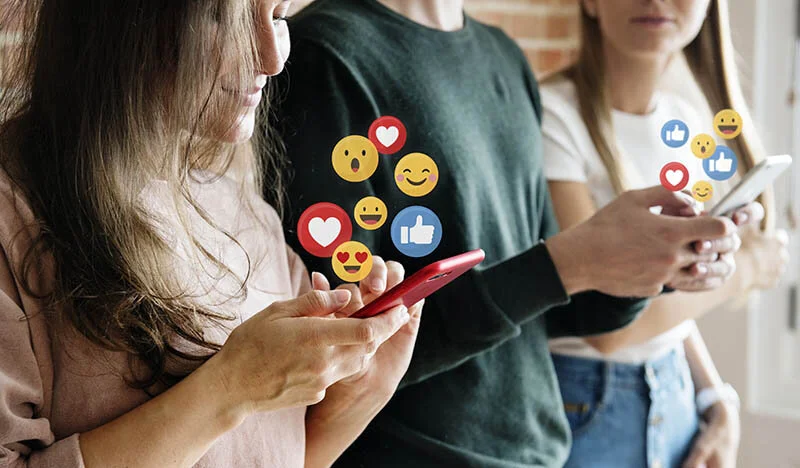Your website design affects every part of your digital business: traffic, conversions, bounce rate, profits, brand perception, and more. If you find yourself struggling to get more traffic to your website or encouraging them to stay long enough so they can find something of value on the site, then maybe it’s time to think of a redesign. Or some minor tweaks, at least.
In this post, we are going to share with you some impactful web design best practices – 6 of them – that will improve your website’s design and contribute to your business’ success.
So, without further ado, let’s see what these 6 pro tips are:
1. Consistent Design
Gestalt psychology teaches us that the human brain is hard-wired to look for patterns, schemes, and structures everywhere. Even when there are none, our mind is tricked into assuming there are. Design that looks unified and harmonious seems the most natural to us and we respond positively towards it.
So, strive for an on-brand unified look when creating your website design. Few things that can help:
· Ample white space (also called negative space) will help to give your amazing brand design a breathing space.
· Place your brand logo prominently in the top navigation and make sure it communicates your brand message. For example, a construction logo design with hardware tools will look much more appropriate for a builder than a swoosh symbol.
· Same size CTA buttons and consistent with brand colors will “train” the user to click on them where they see CTAs.
· Limited (no more than 2-3 colors) and natural color palette that is consistent with your brand colors.
· No transparent overlays unless it makes sense to have them for visual clarity.
· No more than two font styles to increase legibility and visibility of headings and texts.
· The font size that makes text easier to read such as nowadays 18px is ideal but this also depends on the font type chosen.
· Short, concise headings ideal for skimmers but meaningful for readers.
· Pay attention to visual hierarchy when laying out design elements
2. Optimized and Responsive Website
A mobile-optimized and a responsive website are two slightly different things.
· Mobile-Optimized: web design that is optimized to look its best when viewed on mobile screens. The design reformats and restructures itself to ensure it looks correct no matter the screen size.
· Responsive: web design that ‘responds’ to several different screen sizes – mobile and desktop combined. It is more intuitive and desirable than merely a design that is optimized for mobile.
As more than half of all USA e-commerce sales occur on mobile devices, it is crucial to invest in responsive web design. If for any reason, you cannot fully convert your website design to become responsive, aim for mobile optimization at the very least. 57% of internet users refuse to recommend a business that has a poorly designed website when viewed on mobile.
3. Intuitive Navigation
Website navigation is there to guide your traffic to the main interest areas on your website. Ideally, your website visitor should be able to access any part of your website from any other part within 2 clicks – three, at the most. To design your web navigation intuitively, pay attention to these simple points:
· No more than 4-6 (most important) items on the main menu.
· No sidebars, carousel, or slideshow
· Eliminate extensive dropdown menus.
· Use descriptive labels for the menu and CTA buttons with no technical jargon
· Keep the navigation bar fixed so users can access it from anywhere
To make your navigation work, map out user journeys to figure out which actions you want your user to take when they land on the home page and where you want them to go next.
4. Tuck Away the Social Media Buttons
If you have spent any time searching for ways to improve your website design, you’ll know that almost everyone talks about placing the social media buttons prominently. But here’s how it can backfire.
You’ve spent loads of time and efforts to create and launch your website. Yet, by placing social media share buttons prominently on your navigation, you are inviting users to abandon your site and go check out your Facebook page. Why?
Social media is there to help direct visitors to your website, not the other way around. So, hide your social media buttons in the footer of your website. And through intuitive navigation, encourage your users to explore your site and find incredible stuff on it.
5. Speedier Page Load
The page load speed is crucial in determining how successful your website is. As per Google, the probability of a bounce increases 32% when page load time goes from 1 second to 3 seconds.
Slower page load speed also affects SEO and hurts your page rankings. To improve your page load speed, pay attention to these design tweaks:
· Review your website and get rid of all unnecessary content (text, images, videos)
· Optimize the images on-site to combat stocky, heavy graphics
· Use a Content Delivery Network to ensure better server access as per user location
· Invest in dedicated hosting
· Check for broken links or error pages
· Make the elements on your website load on an as-needed basis (items won’t start loading until the users scroll down to them; results in faster loading of necessary items)
6. Step Away from The Computer
When you have designed your website or have got your prototypes ready, get up, and walk a few feet away from the computer. Now look at your website and see the features that stand out. Are they the ones that you want your customers to focus on? Are they your money-makers?
If no, you need to rethink the design. Change elements and do the walk-away test again. This test will help you realize what features stand out to your visitors when they first land on the site. If they aren’t your most important features, changing the layout or some other design tweaks may help.
Parting Words
Everything related to web design is dependent upon user-experience. As users’ experience and expectations continue to change, so will web design best-practices. So keep an open mind and remain up-to-date on what’s working.
In the comments below, do share what pro tips have worked for your businesses and let the whole community share in the wisdom.
Author Profile
My name is Alina McCarran, and I work as a freelance content writer and social media marketer. When not working on my projects, I like to read, draw, and listen to rock music. My favorite band is Queen.













